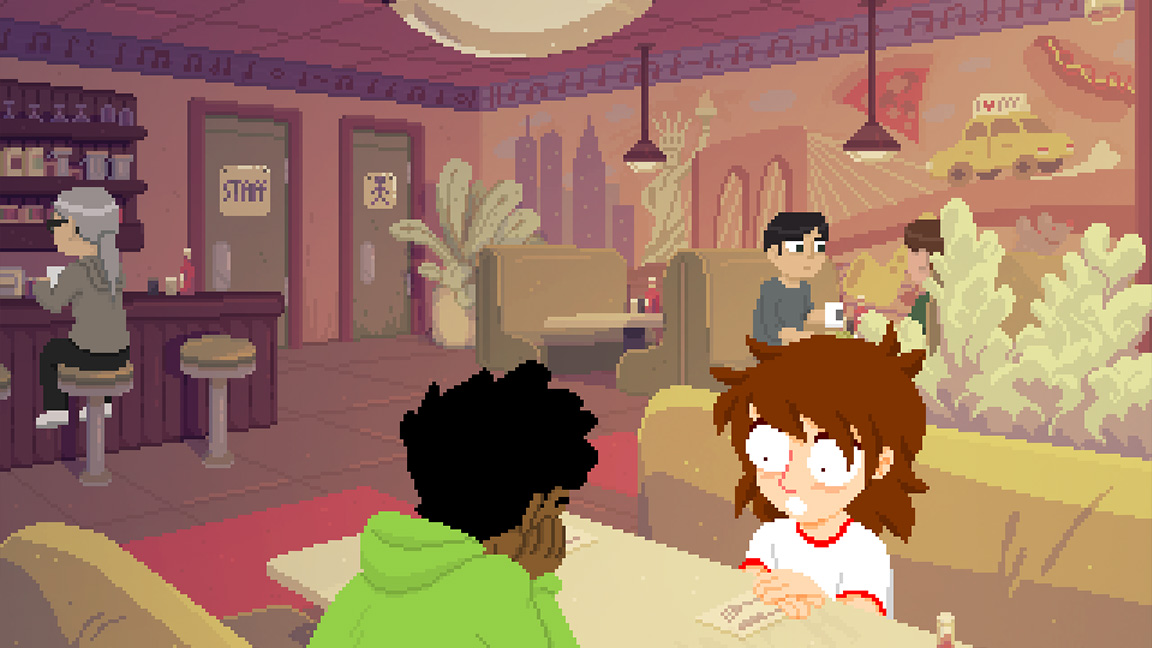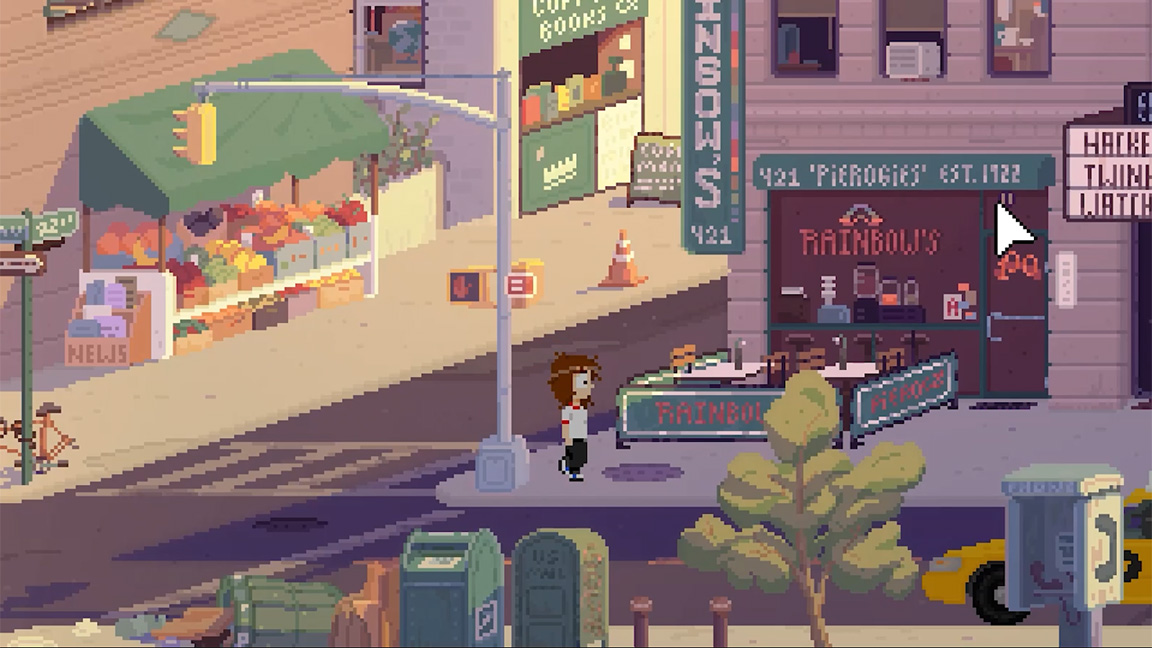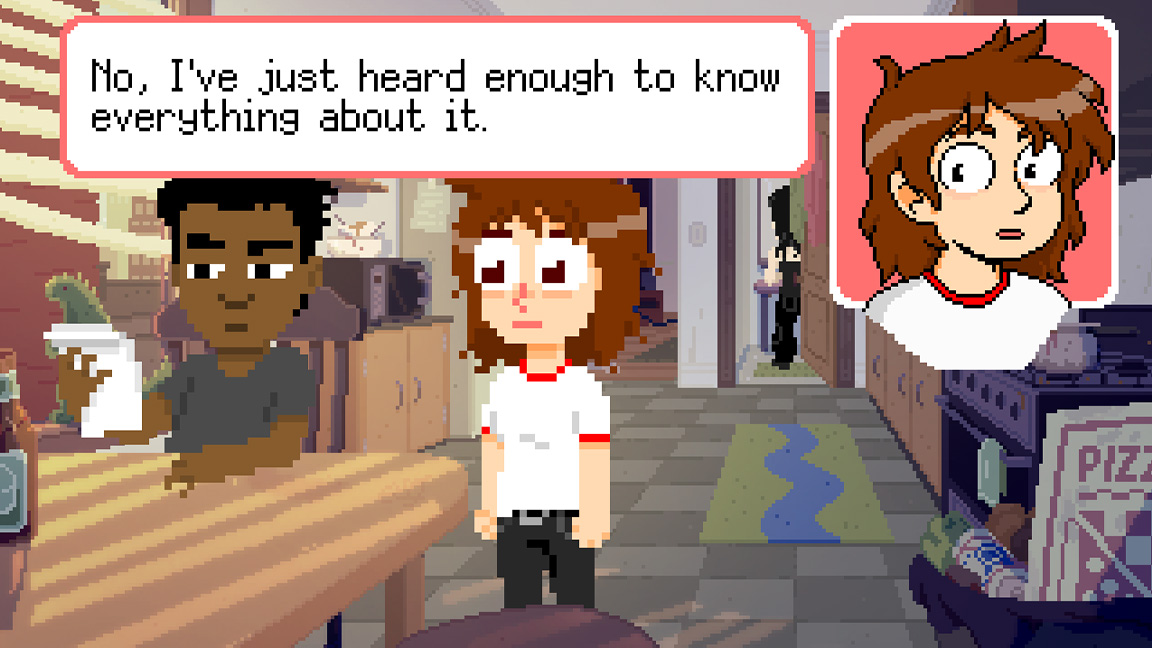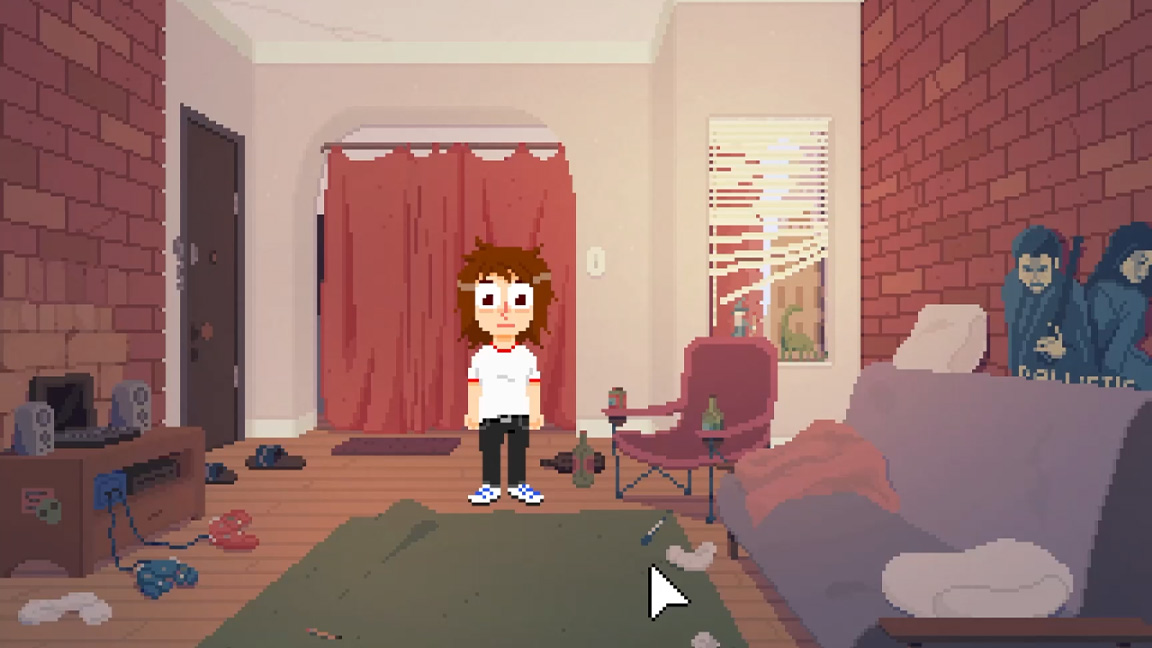The most human game I've seen this year looks like it was made in MS Paint
Meredith Gran’s indie journey from Octopus Pie to Perfect Tides.

Compared to the smooth hand-drawn animation that's popular in modern indie games, the low-res 2D visuals in Perfect Tides: Station to Station can conjure up derisive memes about MS Paint, or those awful CD-i Zelda games. Yet the rough but detailed images from the game's creator, Meredith Gran, so vividly capture college life in the big city, from crowded, sweaty student dorm parties to the days when checking your emails required logging into a public library computer. And that rougher style suits her well.
"I find that it's a little bit more forgiving to draw with a low-res style - you can get both a rougher drawing and a more perfect drawing," she tells me. It's an aesthetic that naturally gives off a nostalgic vibe for a game set in 2003, as also given away with film posters of The Matrix Reloaded and Donnie Darko, a curvy pink iMac, and the timeless (indestructible) design of the Nokia 3310 phone that your teen adult protagonist, Mara Whitefish, owns.
Gran's own inspirations for this point-and-click adventure game, however, come from classic adventure games hailing from the '80s and '90s (read our lists of best games of the 1980s), notably those made by Sierra On-Line.
"When I approached games, I really had very little awareness of where even contemporary developers were going with their games," she explains. "So what I was pulling from was the games that made sense to me when I was younger."

From indie comic to indie game
Incidentally, while Station to Station is a sequel to her 2022 game (just titled Perfect Tides), originally set during Mara's adolescence, Gran is better known for her webcomic series Octopus Pie, which ran from 2007 to 2017, and focused on the lives of two twenty-something women living in Brooklyn. Drawing and writing these often rapid-fire strips on a semi-daily basis was an invaluable way of getting instant feedback that, when looking back, also prepared her for getting into game development later.
"I feel I was able to take a lot of what I learned from those [webcomic] days and apply it to [game development] that I would then have to kind of disappear into for many years at a time, but knowing a little bit better in advance how people would react to those sort of things," Gran explains.
"Webcomics also have an interactive component to them," she explains. "They can be sort of like an infinite scroll with a large canvas, and you can invite the reader to do more than just go from one end of the page to the other. That allowed me to get a sense of how people would be interacting with the stories as well."
Daily design news, reviews, how-tos and more, as picked by the editors.

Learning to code
While still confessing to learning how to make games from scratch, and modest about her coding abilities, Gran, however, hasn't relied on modern game engines such as Unity but instead opted to develop the Perfect Tides games with Adventure Game Studio, an open source engine that's now 28 years old but has continued to develop with updates from a dedicated community.
Meanwhile, the majority of the game's art has been drawn using Aseprite, which has been used by other indie devs mostly for pixel art, though it was also the same software used to develop indie breakout Pizza Tower, which also has a purposely cheap, low-res aesthetic.
"I was a millennial kid who grew up with computers in the house, and I always had kind of an interest in how they worked and how best I could manipulate them to get the thing that I wanted," she continues, having started with only knowledge of HTML and CSS for coding on the web. "I think learning to code when you're just working from an example of something that might be useful to you is way less effective than knowing exactly what you want it to do and then figuring out how to code that."

Working in new dimensions
That drive for learning and improvement incidentally mirrors Mara's own journey for inner growth in Station to Station. This story may take her from her small island town (the titular Perfect Tides) to the big city, but Gran's focus is less on telling a story about the vastness of the city that players can explore ad infinitum than about her protagonist's interior life (as a solo dev, she nonetheless has help from artist Soren Hughes, who has illustrated around 60 backgrounds for the game).
It also means this is an adventure game that's less centred on collecting items for puzzles but rather collecting ideas, names, and topics that become new avenues for conversation, helping Mara get what she needs both from people but also to flourish in work and her studies. Even though this is mostly text-based, that still comes up with some interesting design touches, such as having new names and topics being displayed on her phone screen. Most intriguing is how concepts in her head are visualised as pseudo-3D shapes that also evolve.
"I was definitely thinking about it just in terms of a funny image that you're turning an idea around in your head, like a rotating 3D object," Gran says. "It starts as a little cube, and then the more you learn about it, the more facets it starts to take on, so that eventually you've got a strange-looking shape in your mind that is impossible to take one look at and get the full idea. You have to examine every facet of it."
Perfect Tides: Station to Station is coming to PC and Nintendo Switch on 22 January 2026. You can play the Steam demo as part of Steam Next Fest, 13-20 October

Alan Wen is a freelance journalist writing about video games in the form of features, interview, previews, reviews and op-eds. Work has appeared in print including Edge, Official Playstation Magazine, GamesMaster, Games TM, Wireframe, Stuff, and online including Kotaku UK, TechRadar, FANDOM, Rock Paper Shotgun, Digital Spy, The Guardian, and The Telegraph.
You must confirm your public display name before commenting
Please logout and then login again, you will then be prompted to enter your display name.
